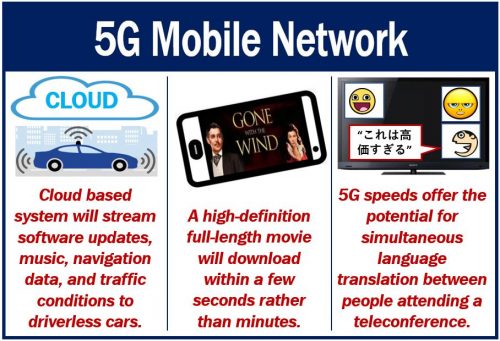Finnish researchers say that the next generation 5G mobile network may improve road safety. By using fast data transmission solutions, we’ll be able to gather a massive amount of data on vehicles on the road. We can use this data, for example, to carry out road maintenance and provide road weather services. Computer engineers and AI specialists will also be able to use the data to control self-driving cars.
AI stands for artificial intelligence, i.e., software technologies that make computers and robots think like us. AI also makes them behave like us.
Researchers at the Technical Research Centre of Finland (VTT) say that the ultimate goal would be to reduce traffic accidents.
VTT is taking part in a project – 5G-Safe – which is examining how to use the 5G mobile network to improve road safety. Collaborators include Unikie, Deastia, and the Finnish Meteorological Institute. 5G-Safe, which Business Finland is financing, is part of the Challenge Finland competition.

5G mobile network and new data transmission solutions
Thanks to new data transmission solutions and the ultra-fast 5G network, we’ll be able to gather huge amounts of data. Specifically, radar and video data from cars, trucks, and other vehicles. It will also be possible to transmit the information in almost real time.
Tiia Ojanperä, a VTT Senior Scientist, said:
“The data can be collected automatically without the drivers needing to do anything themselves. The required technology can be installed at the factory.”
“The data can also be processed and warnings sent to other road users by means of automated systems.”
Local weather services and 5G mobile network
Local weather services are one of the major applications for the data that will come in via the 5G mobile network. In the future, local weather services will be able to send real-time information and warnings directly to drivers. Drivers’ with satellite navigation devices, for example, will have access to this service.
Ojanperä said:
“The new solutions give drivers access to highly localized data, such as warnings about icy conditions around the corner. Drivers can use the information to choose a different route or change the way they drive.”
It is also possible to transmit some weather warnings automatically through the current 4G mobile network. Engineers are gradually introducing solutions.
However, transmitting 3D views and real-time video footage between vehicles requires significantly more network capacity. The 5G mobile network has that capacity.
Vehicle videos and 3D views via 5G mobile network
Regarding using 3D views and vehicle videos, Ojanperä said:
“One way to use vehicle videos and 3D views is a see-through application piloted as part of our project. It can be used, for example, to share the dashboard camera footage of a lorry holding up a long queue of cars with the drivers stuck behind the lorry.”
“This increases safety especially in poor weather conditions such as when visibility is obstructed by drifting snow.”
Road maintenance – new possibilities
5G mobile network and new data transmission solutions will provide a very efficient way to gather data on road conditions. It will be possible, for example, to use the data to alert road maintenance providers. They will receive information on potholes, fallen trees, snow drifts, and other issues requiring their attention.
Ojanperä said:
“Road maintenance contractors are currently responsible for collecting this information themselves and therefore need to drive around to inspect roads visually.”
“This is highly labor-intensive work. If monitoring could be crowdsourced to all road users, road maintenance contractors could work considerably more efficiently and also cut their costs.”
Prioritizing maintenance work
Road maintenance contractors will be able to prioritize their most urgent jobs more effectively with access to comprehensive data. They will also be able to identify issues at an earlier stage. Therefore, they will be able to fix them more promptly.
If road maintenance subsequently becomes more efficient, the whole road network will become safer.
5G mobile network and self-driving cars
The 5G mobile network will help drivers behind the wheel considerably. However, its impact on self-driving vehicles might be even greater.
With real-time data, it will be possible to control self-driving vehicles more effectively. It will also be possible to alter their behavior based on observations.
Engineers have already tested these possibilities on VTT’s self-driving car. They tested the vehicle’s ability to detect icy conditions in advance, as well as obstacles on the road.
In challenging conditions, precise information is crucial for self-driving cars. So far, we have only used self-driving cars in areas where weather conditions are favorable. With the 5G mobile network, automated vehicles will be able to navigate safely in more challenging conditions.
Ojanperä said:
“Controlling self-driving cars in Finland’s climate requires accurate information on road conditions almost in real time. The new technology makes it possible to collect data from areas beyond the cars’ own sensors. These kinds of services are extremely important for future self-driving cars.”
Video – 5G Automated Driving at VTT
This VTT video shows why the 5G network is important for the development of self-driving vehicles.
